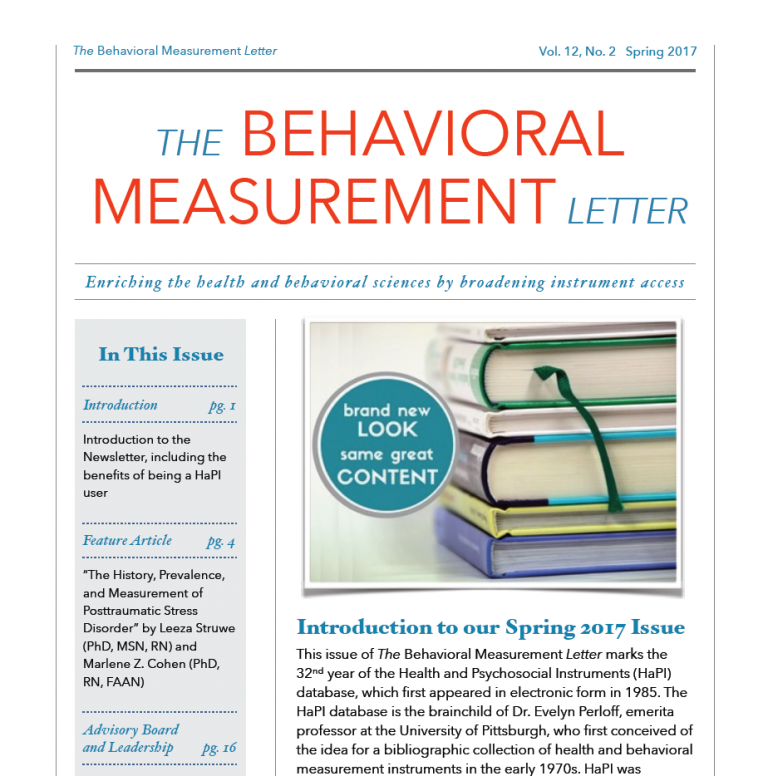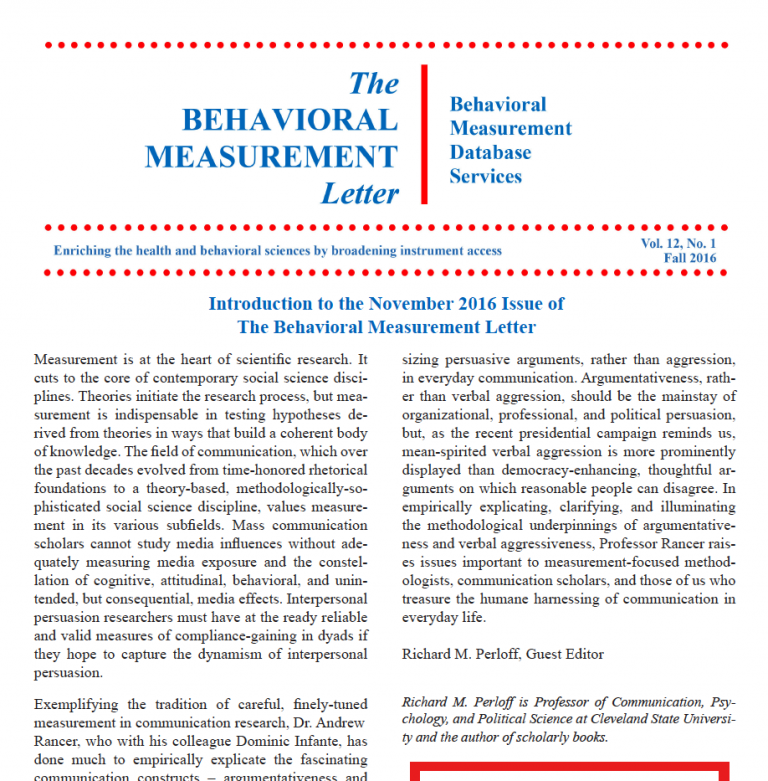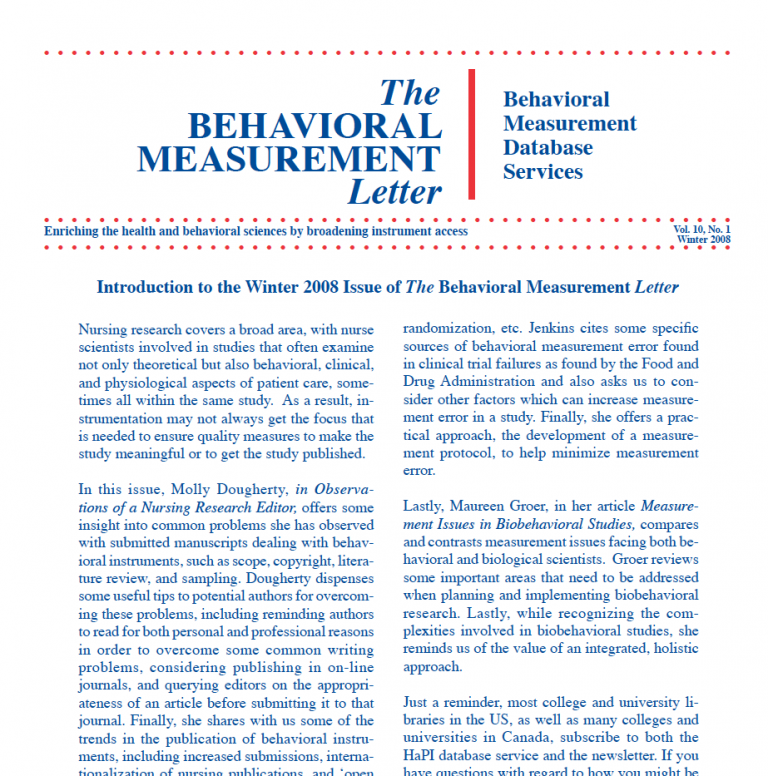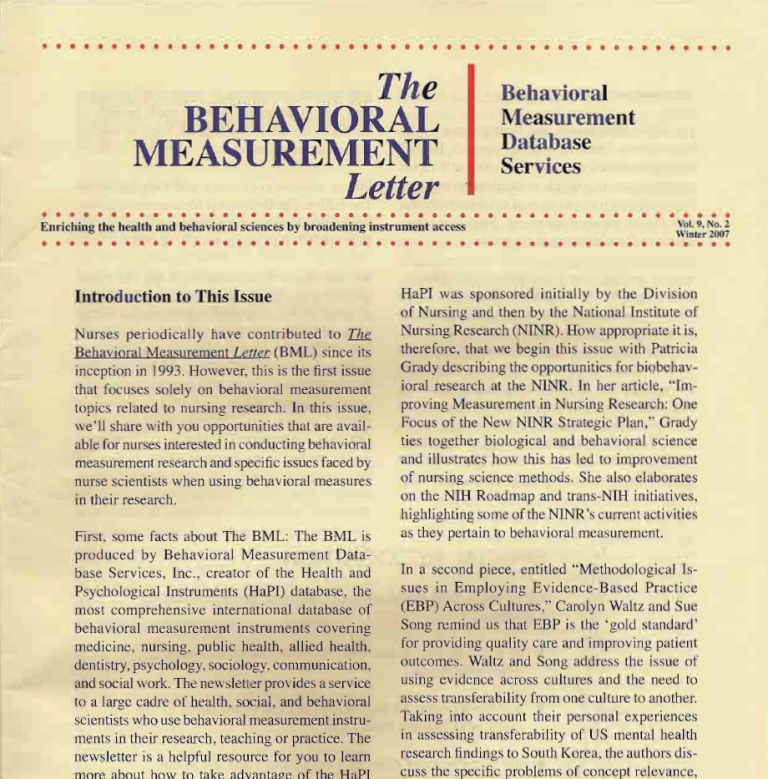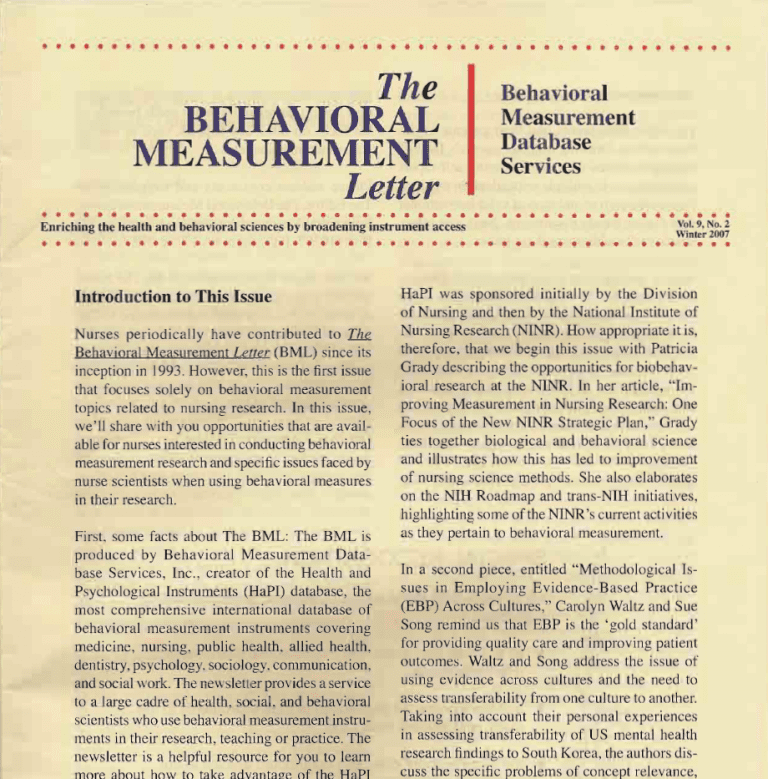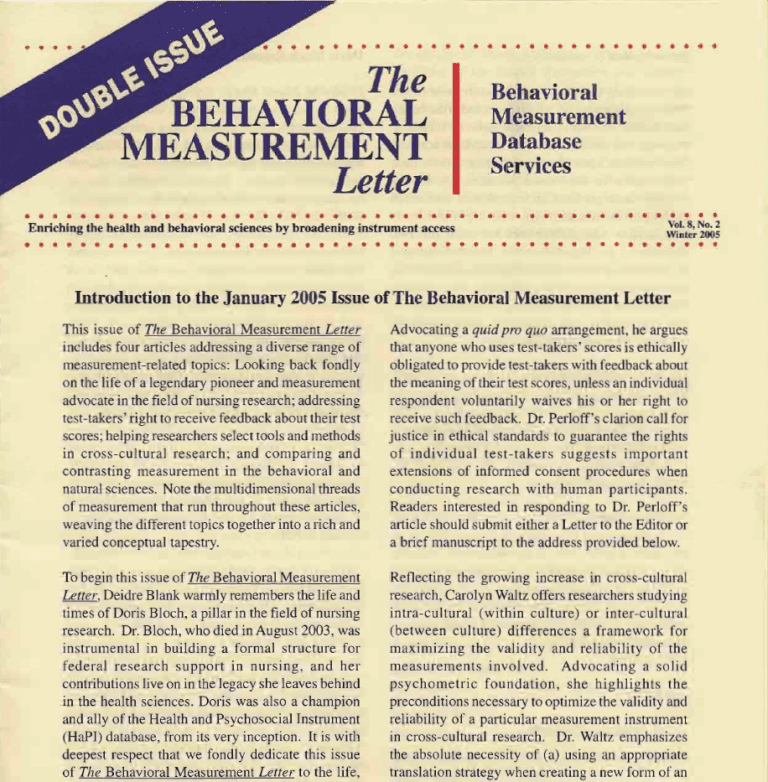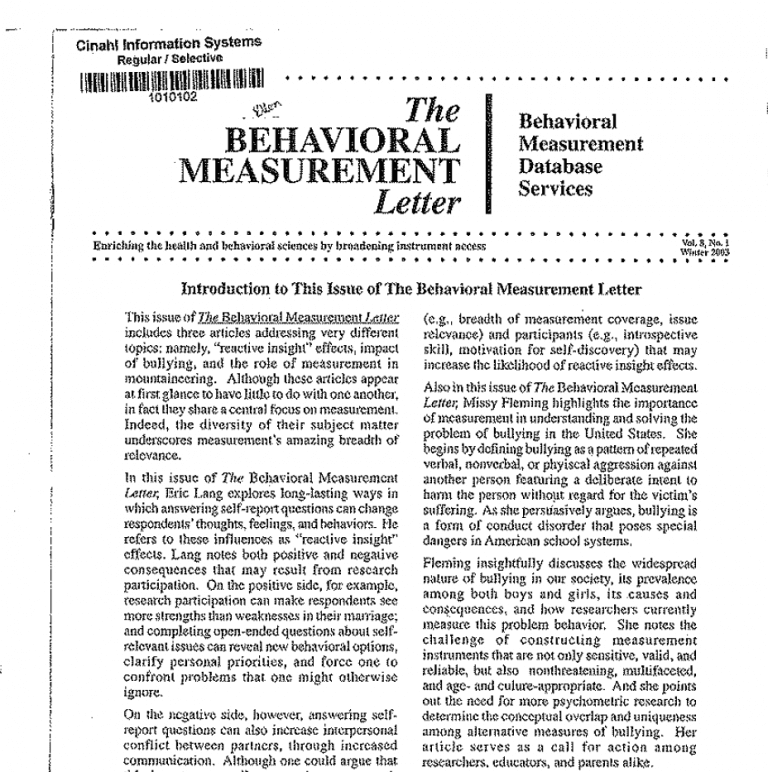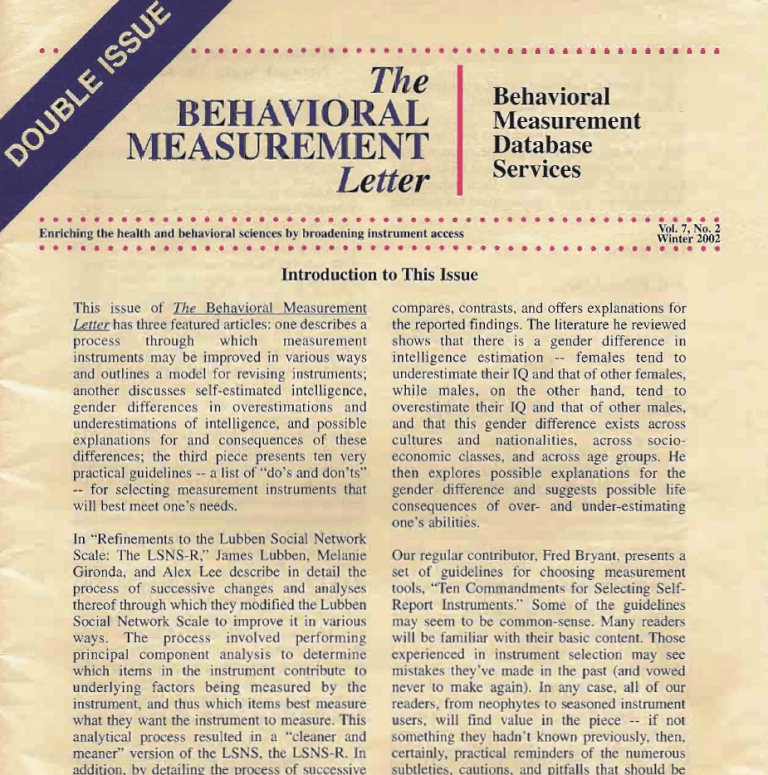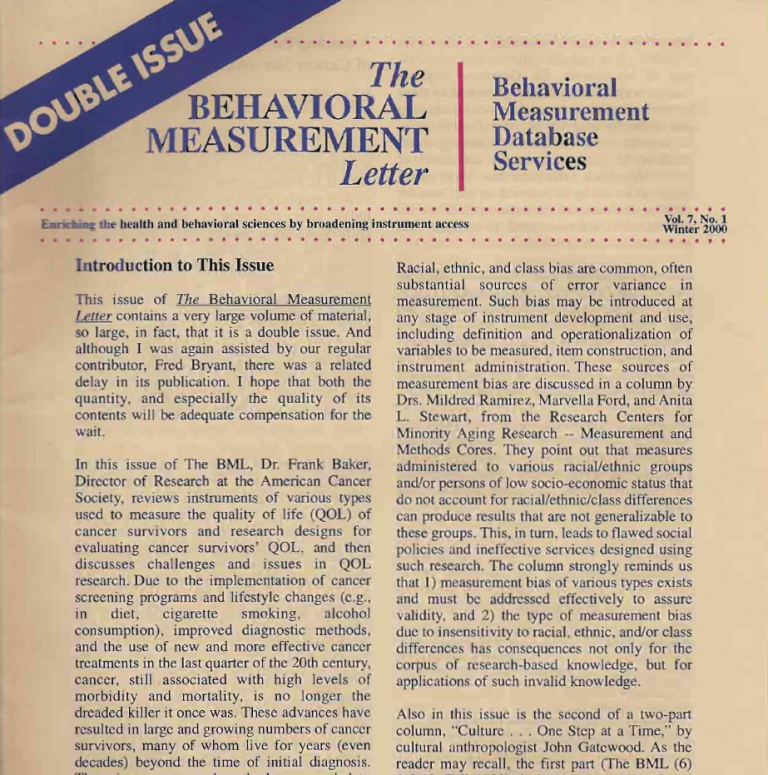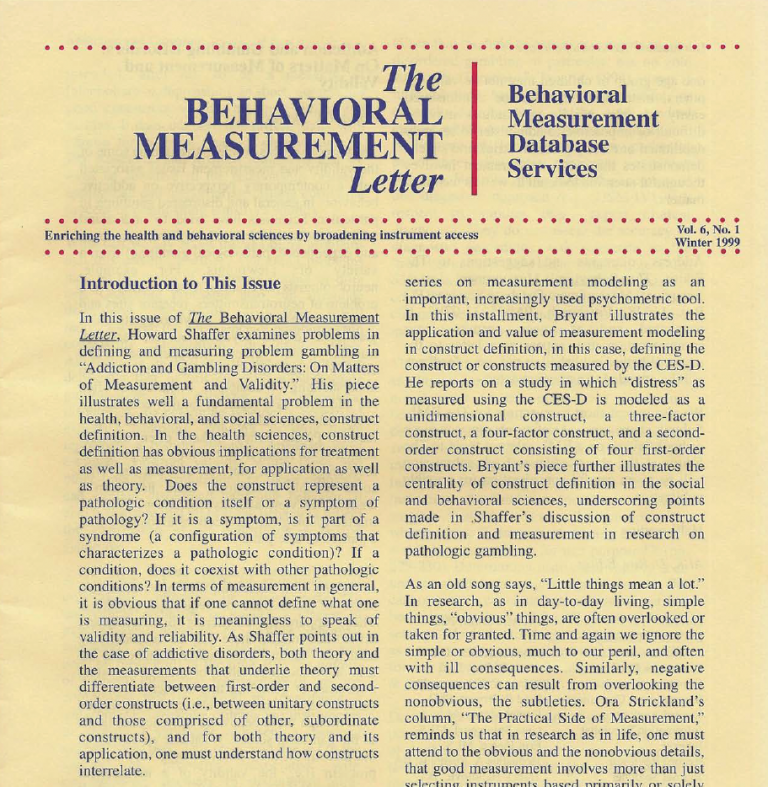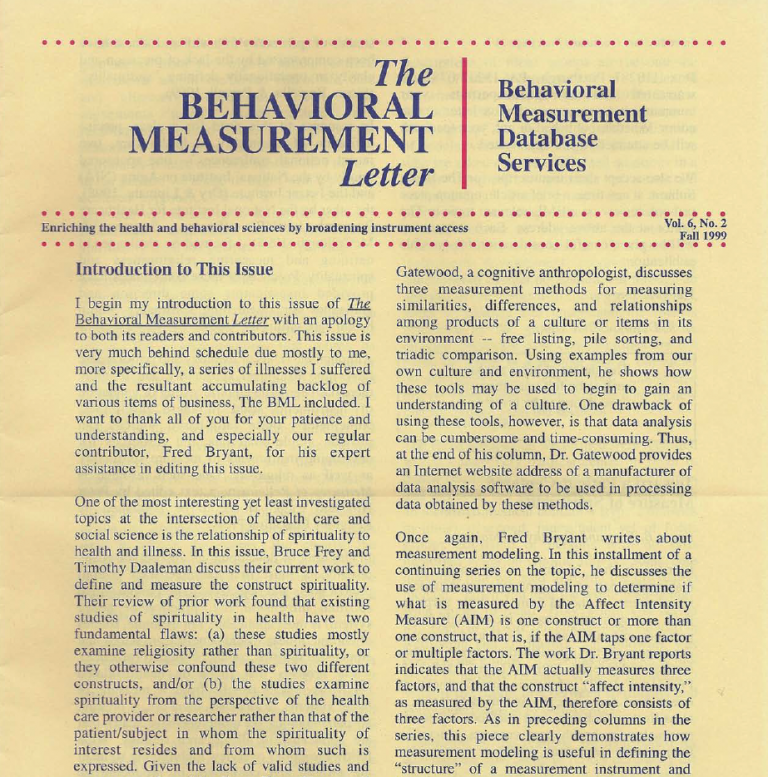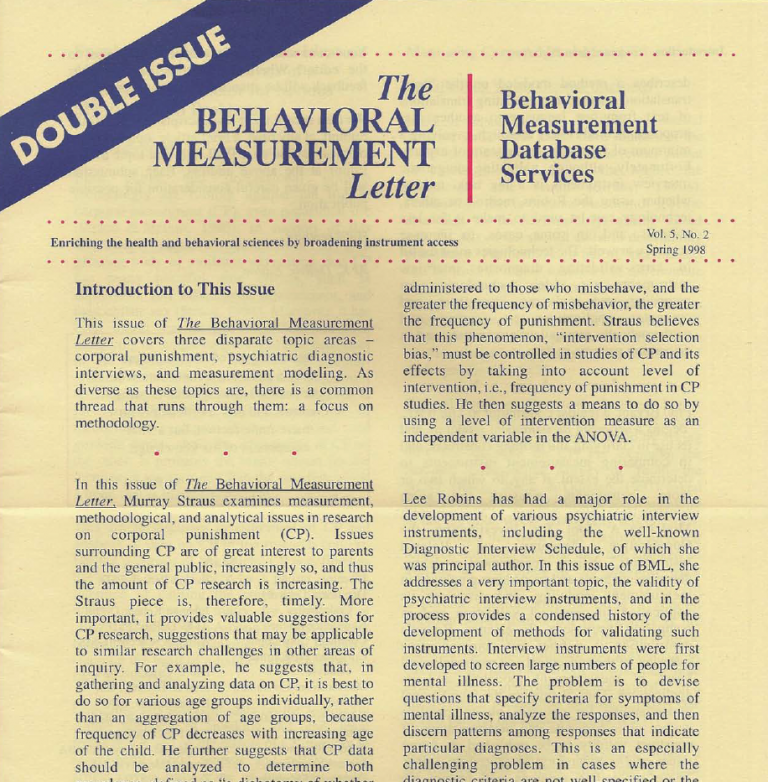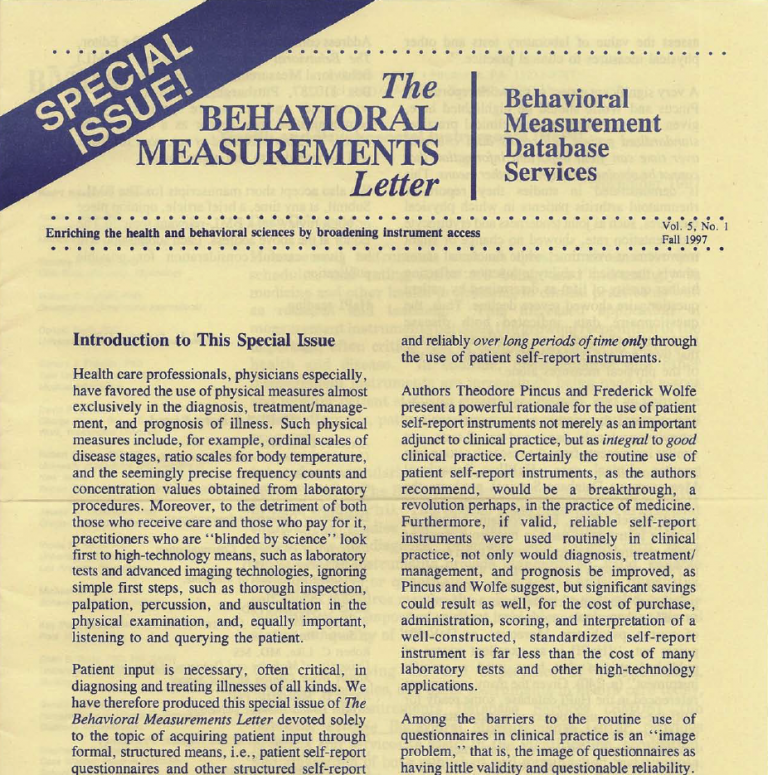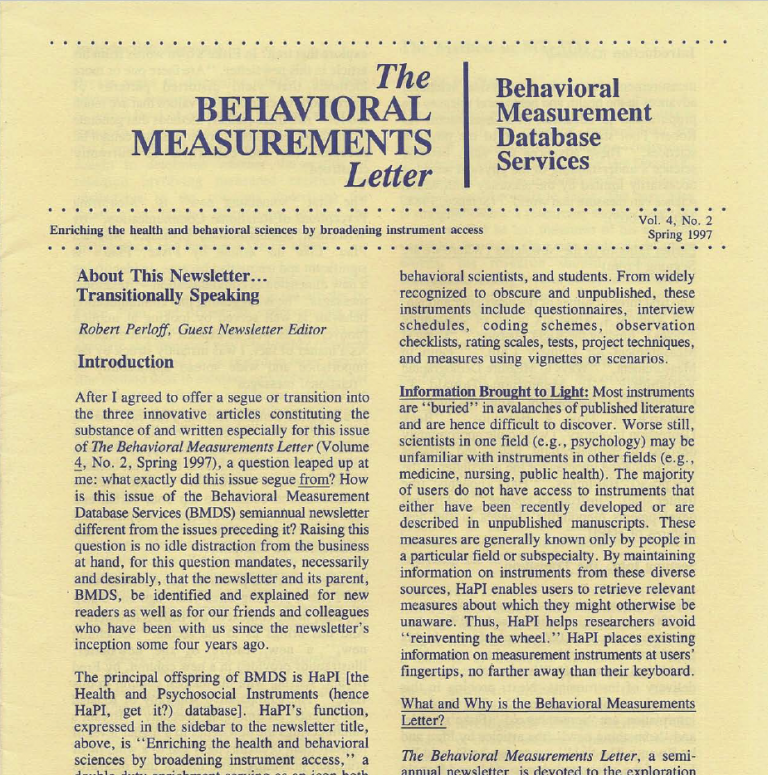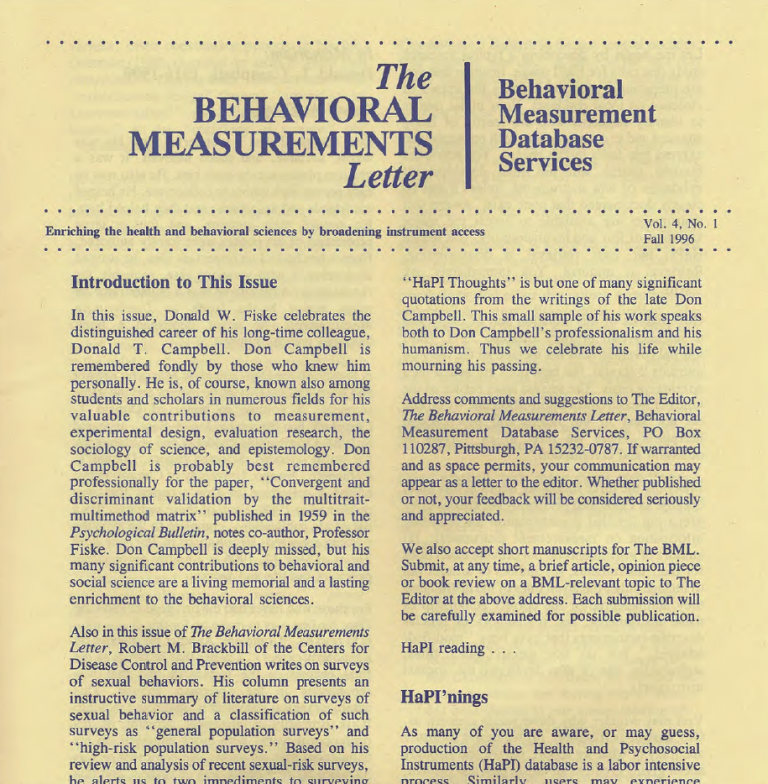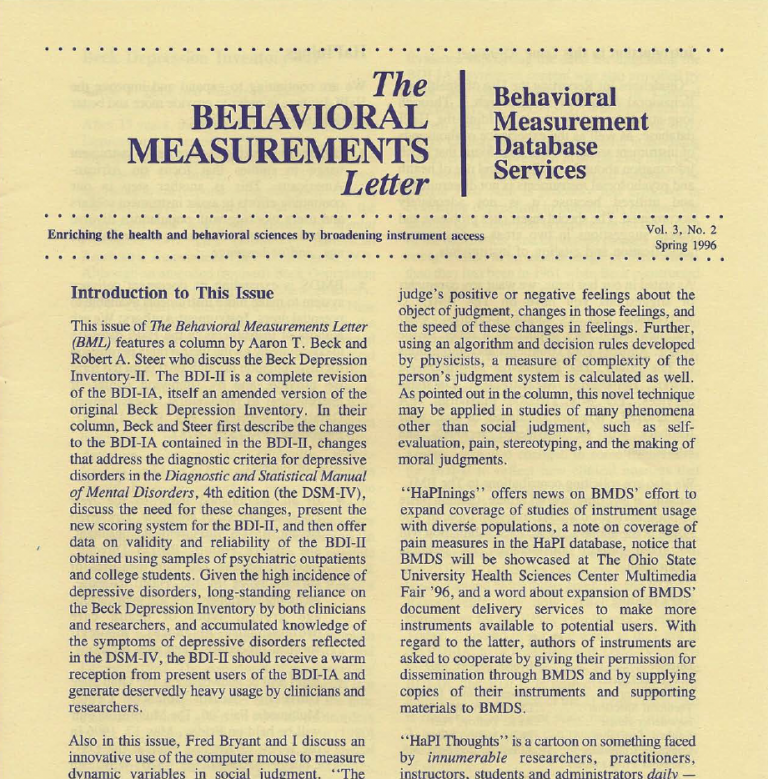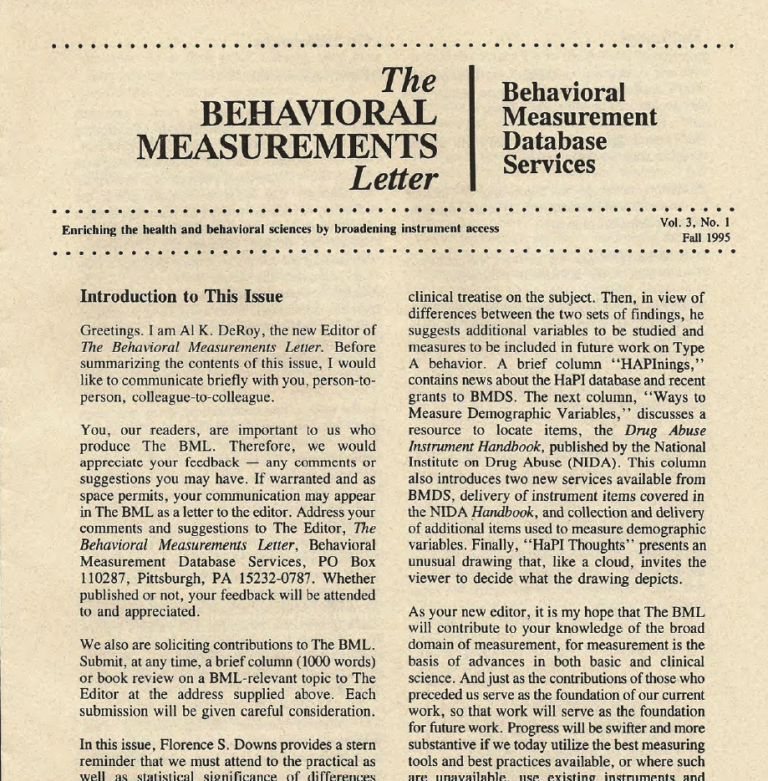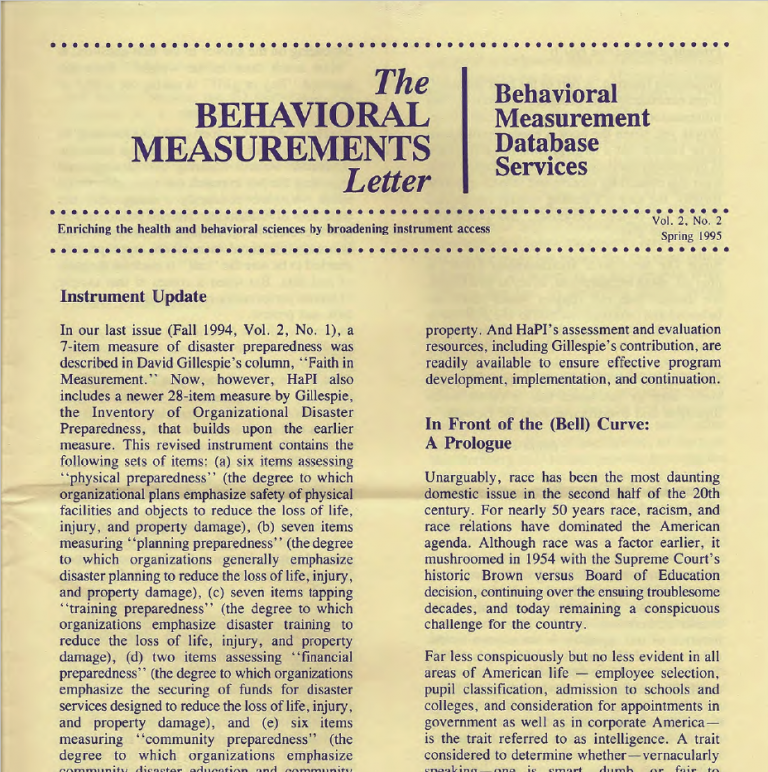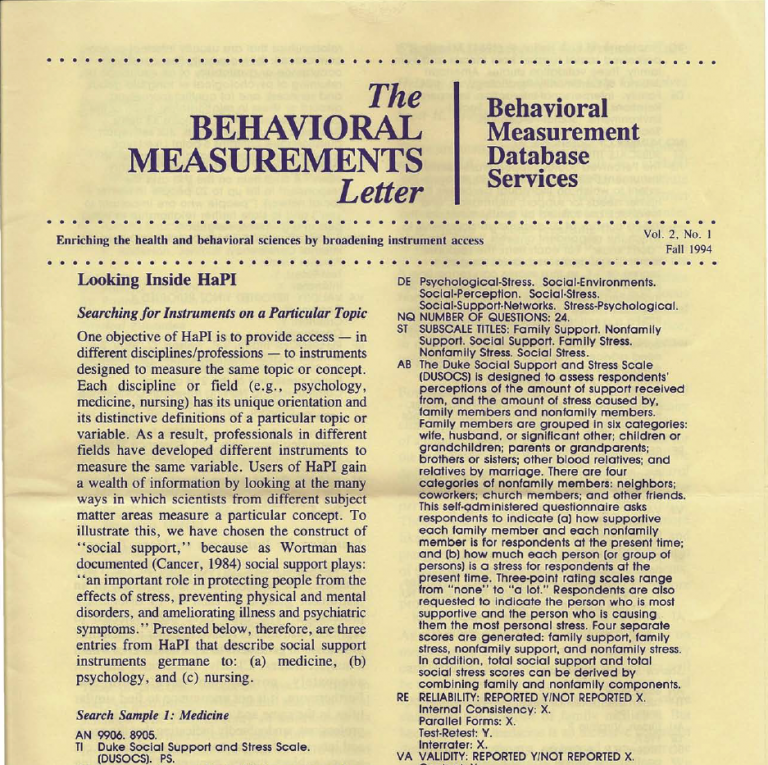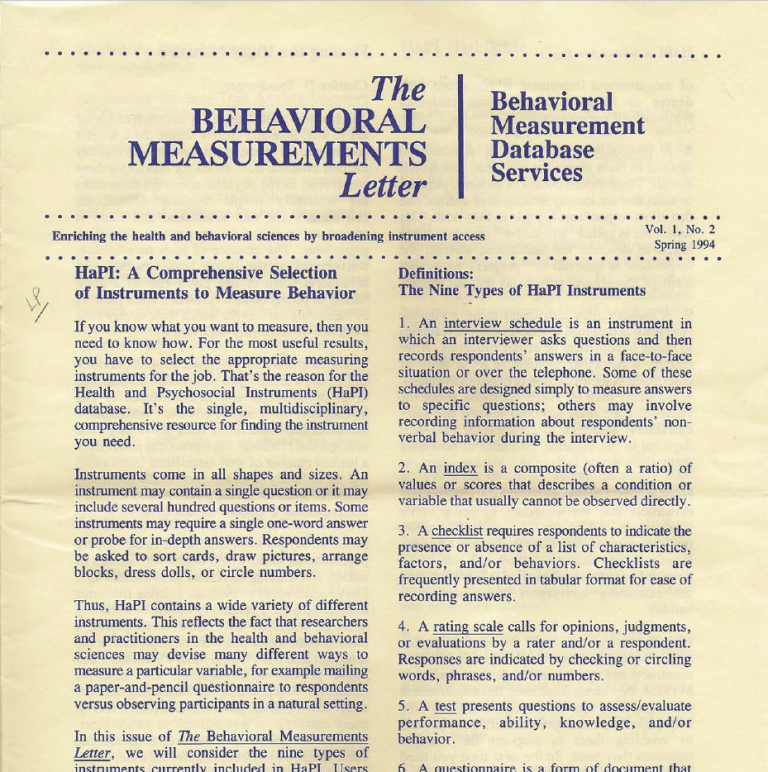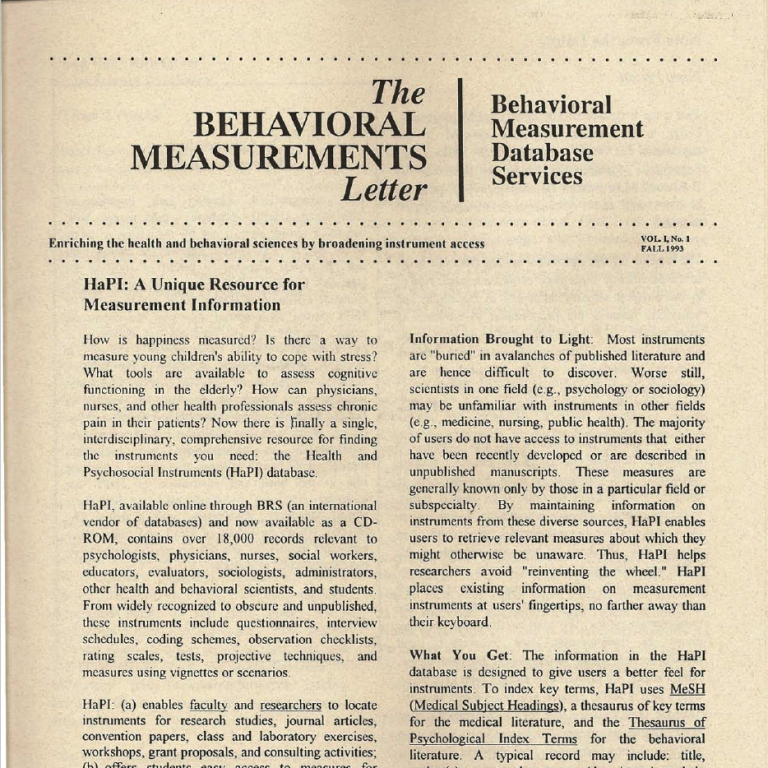Continued article from the The Behavioral Measurement Letter, Vol. 3, No. 1 Fall 1995
Much time is often devoted to creating a measuring device when an adequate one already exists, resulting in duplication of effort, considerable waste of resources, and loss of uniform comparability of data.
The quotation above parallels much of the rationale for the Health and Psychosocial Instruments database. It is taken from the Preface to the Drug Abuse Instrument Handbook (Nehemkis, Macari, & Lettieri, Eds.), published in 1976 by the National Institute on Drug Abuse (NIDA). Despite its age (it is out of print), the Handbook is a unique and useful compendium of selected items used in health and psychosocial research, containing more than 2,000 items from 40 instruments.
Researchers often find that measurement of what are often thought of as simple variables, such as age, ethnic origin and gender, is, indeed, not simple. For example, age may be measured in years, months or days, with the resultant degree of precision correlating with the measurement unit used. Furthermore, age may be measured in terms of categories (such as under 21, 22 to 64, 65 and over), with the number of categories employed dependent upon the purpose of the question. Moreover, age may be determined by asking the question in any of a number of ways, such as “How old are you?” “How old were you on your last birthday?” “In what year were you born?”
Thus, in the area of demographic variables, researchers in a broad spectrum of fields and disciplines are continually seeking valid and reliable ways to determine the characteristics of their samples. As shown in Table 1, the NIDA Handbook provides more than 200 examples of how to ask questions, i.e., items, to measure various demographic variables. There are nine variables in the demographic category. These are listed in Table 1 along with the number of items, culled from the 40 instruments covered in the Handbook, used to measure each.
“It takes two to speak the truth . . . one to speak and another to hear.”
– Henry David Thoreau
Table 1
Demographic Variables and Items in the NIDA Handbook
Variable Number of Items
Age 10
Sex 9
Marital Status 10
Ethnic Background 24
Religion 13
Socioeconomic Status 50
Residence 28
Family Composition 23
Education 56
Total 223
The Drug Abuse Instrument Handbook relates directly to the prime purposes of the HaPI database, for HaPI permits researchers and other instrument users to identify instruments suited to their needs, and to obviate the need for instrument users to perpetually ”reinvent the wheel.” Like HaPI, researchers in any health or social science field or discipline should find the Handbook to be a useful resource. In an effort to make this out of-print resource available to our readers and database subscribers, HaPI staff will gladly copy and send the items used to measure a given variable, and will do so for as many of the 40 variables as you specify. You will be charged a fee to cover copying costs, postage and handling. Send your request to Behavioral Measurement Database Services, PO Box 110287, Pittsburgh, PA 15232-0787, phone your order by calling BMDS at (412) 687-6850, or fax your order to (412) 687-5213.
In addition, to make this service even more useful, we are collecting and making available additional items to measure demographic variables. We invite you to contribute to this collection. Please send any instruments containing demographic items, or any demographic items or set of such items,-instruments or items that you and/or your colleagues have developed, and/or those you identify otherwise-to BMDS at the above address, or fax them to (412) 687-5213. All contributors will be listed in The Behavioral Measurements Letter along with our expression of gratitude.
Although our emphasis here is on demographic variables, items in the other three categories covered in the Handbook – Interpersonal, Intrapersonal, and Drug – are also useful for health and psychosocial research. For your information, therefore, these variables are presented by category in Table 2.
Table 2
Additional Variables by Category in the NIDA Handbook
Interpersonal Variables
Group Affiliations Peer Relationships
Family/Parental Family vs. Peers
Relationships Interpersonal Adjustment
Intrapersonal Variables
Education World View
Religion Self-Concept
Marriage, Sex, Parental Deviancy
Role Psychological Adjustment
Career/Life Goals Health
Personal Values Personality (General)
Socio-Political Orientation
Drug Variables
Drug Usage, Ever-General; Frequency and Extent Drug Usage, Recent or Current-General; Frequency
and Extent
Drug Use History
Social Context of Drug Use
Reasons for Drug Use Reasons for Non-Use
Interest in Trying, Maintaining and Changing Drugs
Methods of Administration and Dosage
Availability of Drugs
Attitudes Toward Drugs
Knowledge of Drugs
Effects of Drug Use
Treatment History
There is no such thing as absolute certainty, but there is assurance sufficient for the purposes of human life.*
-John Stuart Mill
*Nobelist Herbert Simon calls this “satisficing.”
Read additional articles from this newsletter:
Measuring Reminiscence in Research on Type A Behavior
Statistical Significance of Differences Between Measures of Outcome
3-1-fall-1995

